





We use the → table of molar masses of the various possible fragments.
We know that it is the cation formed by the initial molecule of the analysed substance less one electron. Its molar mass is almost equal to that of the substance, no fragment can have a greater mass, which makes it easy to detect its peak on the MS spectrum. however - Molecular ions are often very unstable and decompose before they could reach the detector. This is often the case for alcohols and amines. - By fixing a H atom on an electronegative site of the molecular ion, it is frequently observed a peak at M + 1 - 13C isotope has a natural abundance of 1.11% on earth, that's why there are often found peaks at M + 1, M + 2, ... becoming progressively weaker.
Examples:
 Mass spectrum of propanoic acid: $C_2H_5COOH$, molecular peak at $M=74$
Mass spectrum of propanoic acid: $C_2H_5COOH$, molecular peak at $M=74$
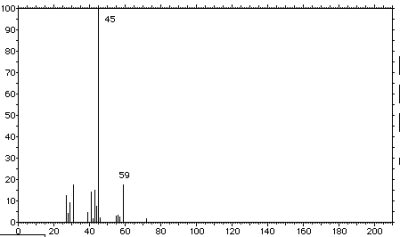 Mass spectrum of butan-2-ol: $CH_3CHOHCH_2CH_3$, molecular peak at $M= 66$ barely visible
Mass spectrum of butan-2-ol: $CH_3CHOHCH_2CH_3$, molecular peak at $M= 66$ barely visible
Different groups of substances in organic chemistry have characteristic modes of fragmentation :
The breaks are regular, except for $n=1$. Hexadecane, for instance $CH_3(CH_2)_{14}CH_3$ produces the fragments
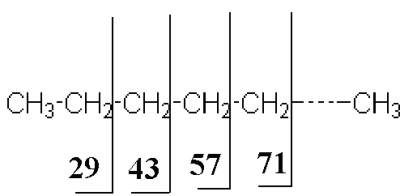
Fragments of 3 carbon atoms and 4 carbon atoms are the most frequent, the frequency decreases steadily with the molar mass. Often these fragments are still losing H atoms which explains, for example, peaks at $M= 69, 70, 71$
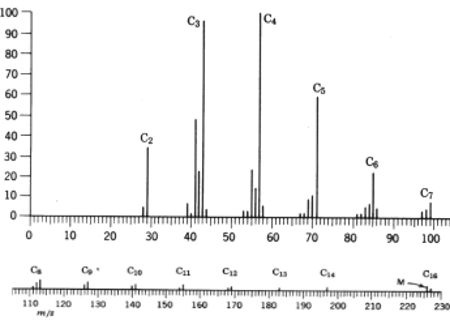 Mass spectrum of hexadecane: $C_{16}H_{34}$
Mass spectrum of hexadecane: $C_{16}H_{34}$
Ruptures occur first on the secondary or tertiary C atom and then remaining linear chains break as above. 5-methylpentadecane breaks first at one of the places indicated:
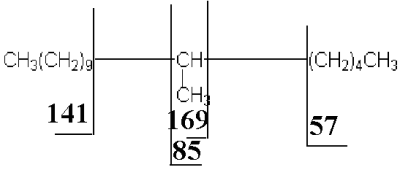
Therefore the spectrum ( larger pieces than 169 are missing):
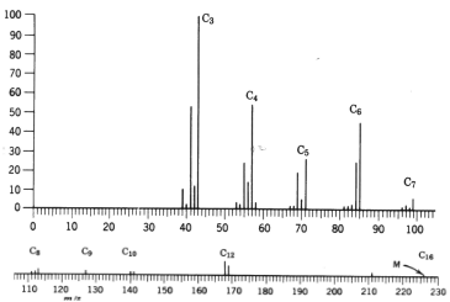 Mass spectrum of 5-methylpentadecane: $C_{16}H_{34}$
Mass spectrum of 5-methylpentadecane: $C_{16}H_{34}$
Alcohols produce the characteristic peak of the fragment $CH_2OH^+$ (31), strong for primary alcohols but rather low for secondary and tertiary alcohols. Fragmentation begins at the functional carbon on the side where the chain is longest:

The main peak of the spectrum of butan-2-ol (molecular peak at $M=66$, see before) is interpreted by the initial fragmentation between second and third C atom. There is still observed a peak at M-18 due to the loss of a water molecule:
 Mass spectrum of butan-2-ol: $CH_3CHOHCH_2CH_3$
Mass spectrum of butan-2-ol: $CH_3CHOHCH_2CH_3$
Fragmentation near the functional carbonyl carbon gives characteristic cations $RC^+=O$ and $R$’$C^+=O$ with molar masses $M-R$’ or: $M-R$:
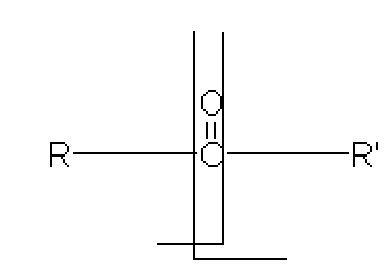
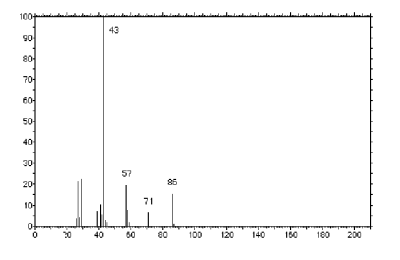 Mass spectrum of pentan-2-one: $CH_3COCH_2CH_2CH_3$
Mass spectrum of pentan-2-one: $CH_3COCH_2CH_2CH_3$
In the case of aldehydes ( $R = H$ ), we observe a peak at $M-1$, at $29\; ( HCO^+)$, and the departure of water causes a peak at $M-18$
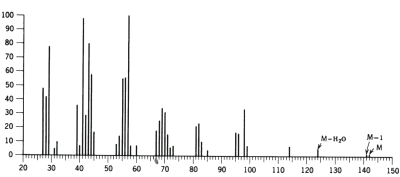 Mass spectrum of nonanal: $CH_3(CH_2)_7CHO$
Mass spectrum of nonanal: $CH_3(CH_2)_7CHO$
As in the previous case, the fragmentation of $RCOOR$' near the functional carbon characteristics carbonyl cations gives $RC^+=O$ and $R$’$OC^+=O$ with molar masses $M-OR$’ or: $M-R$
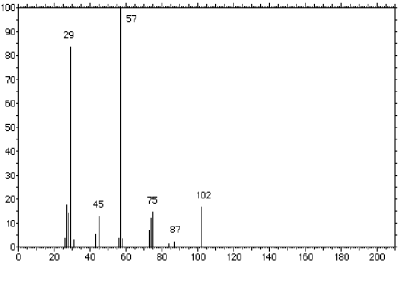 Mass spectrum of ethyl propanoate: $CH_3CH_2COOCH_2CH_3$
Mass spectrum of ethyl propanoate: $CH_3CH_2COOCH_2CH_3$
In the case of acids ( $R$’$ = OH$ ) , we observe a peak at $M-17$ and at $45\;( HCO_2^+)$
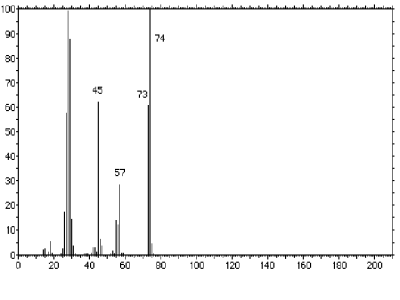 Mass spectrum of propanoic acid: $CH_3CH_2COOH$
Mass spectrum of propanoic acid: $CH_3CH_2COOH$
Fragmentation in favored position β (2nd single bond) from the double bond or the heteroatom $N$ or $O $ leads to a carbocation stabilized by mesomerism.
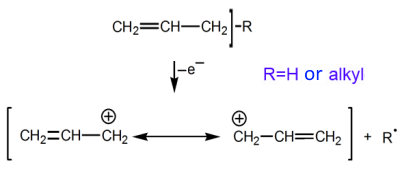

Example:
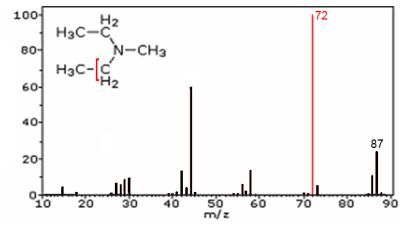 Mass spectrum of the N-ethyl-N-methylethanamine
Mass spectrum of the N-ethyl-N-methylethanamine
In the given example, the peak corresponds to the fragment that remains after the loss of a methyl radical
In the case of a non-alkyl substituent, fragmentation occurs in α position relative to the ring:
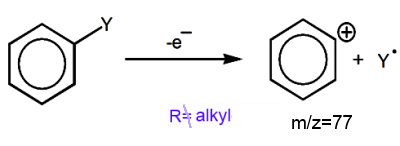
In the case of an alkyl substituent, the fragmentation is done in β position relative to the ring, because the tropilium ion $C_7H_7^+ $ obtained after rearrangement is particularly stable:
